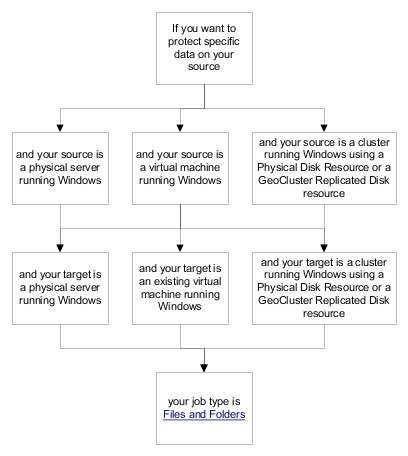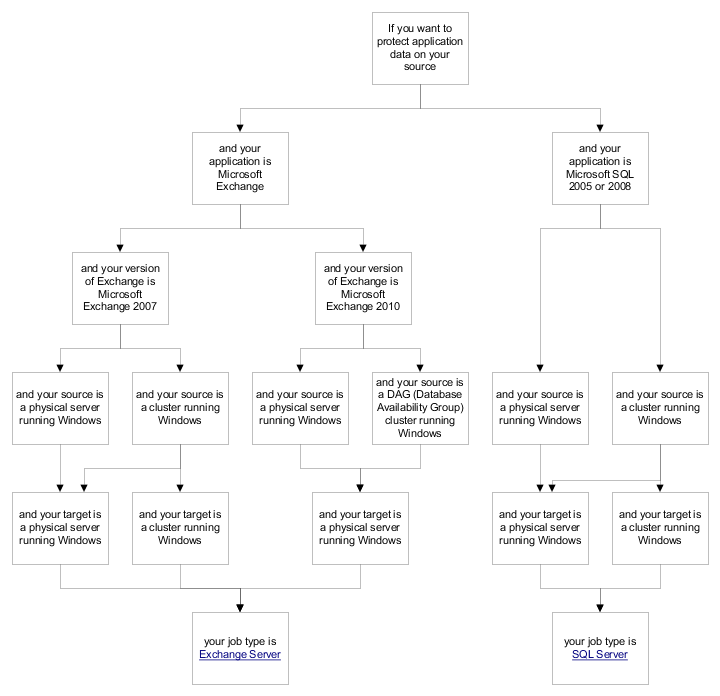

|
Double-Take is an exceptionally flexible product that can be used in a wide variety of network configurations. However, this flexibility can make it difficult to determine which Double-Take job is right for your environment. Knowing what you want to protect on your source is the key to determine which Double-Take job to use. Review the following decision trees to find which job type is best for your needs and environment.
Data protection—If you want to protect specific data on your source, your job type will be a files and folders job. Review the following data decision tree to see the various configurations available for a files and folder job.

If your source is a domain controller, you should use one of the full server protection methods to protect the entire server because of complexities with SPNs.
Application protection—If you want to protect Microsoft Exchange or Microsoft SQL, your job type will be an Exchange Server or SQL Server job. Review the following application decision tree to see the various configurations available for these job types.

If your source is a domain controller, you should use one of the full server protection methods to protect the entire server because of complexities with authentication and as a best practice.
Full server protection—Protecting an entire server is the most flexible, but confusing, scenario. Unlike the data and application decision trees, the full server decision trees leads you to many different possible Double-Take job types. Because the full server decision tree is so large and complex, it is broken down into smaller sections below. Study the full server decision tree, or the smaller sections below, to determine the best job type for your environment and protection needs. The links to take you to that section in the documentation are at the bottom of each decision tree branch in the smaller sections.
